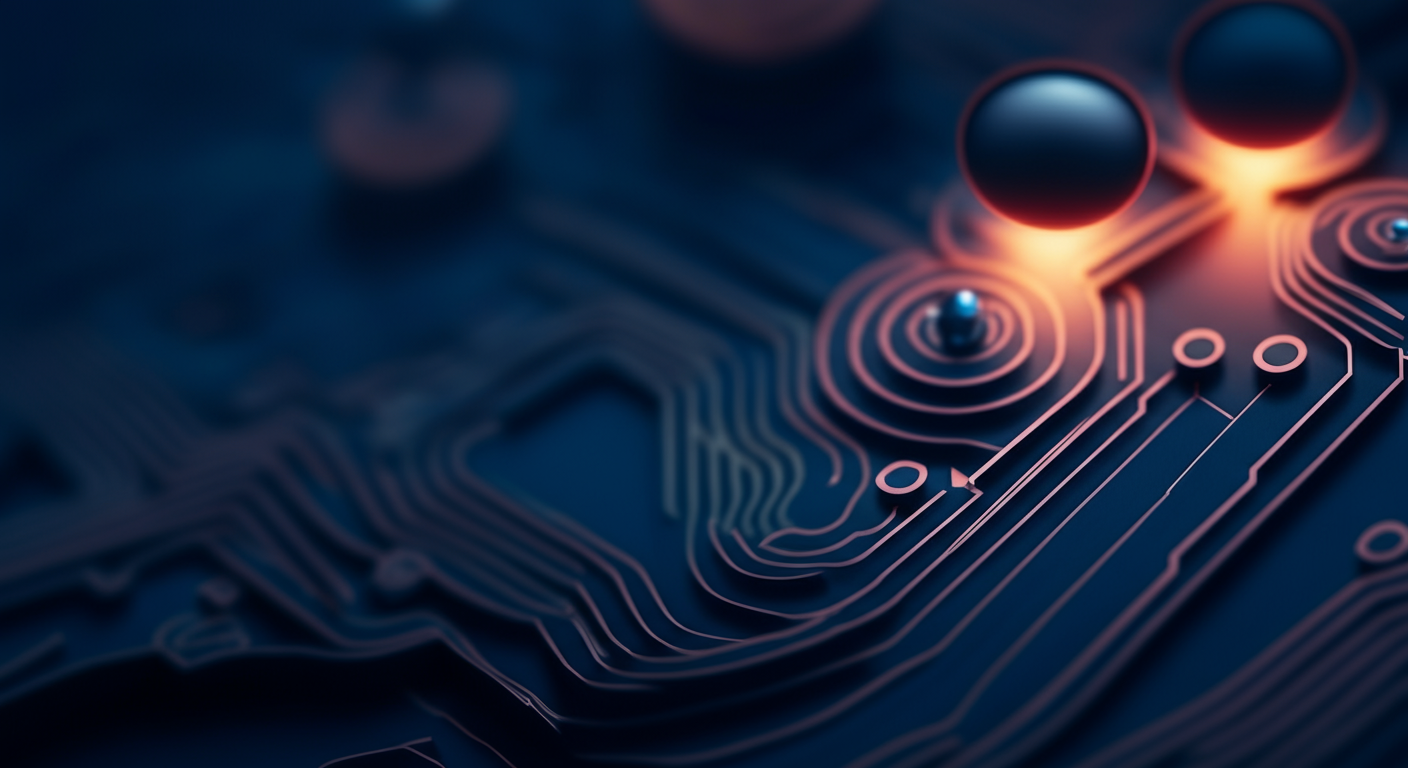AI Workflow Automation: Boost Productivity and Streamline Business Processes

Understanding AI Workflow Automation: A Comprehensive Overview
AI workflow automation is rapidly transforming how businesses operate, promising increased efficiency and streamlined processes.
What is AI Workflow Automation?
AI workflow automation uses artificial intelligence to automate and optimize business processes.
It leverages technologies like machine learning and natural language processing to make intelligent decisions, adapt to changing conditions, and execute tasks with minimal human intervention.
This contrasts with traditional automation that relies on pre-defined rules and static processes. For example, ChatGPT can automate customer support interactions, freeing up human agents.
AI vs. RPA vs. BPA: Key Differences
It's crucial to differentiate AI-powered automation from traditional Business Process Automation (BPA) and Robotic Process Automation (RPA):
- BPA: Automates structured, repetitive tasks using predefined rules.
- RPA: Uses software "robots" to mimic human actions within existing systems.
- AI Workflow Automation: Learns and adapts, handling unstructured data and complex decision-making.
Core Technologies and Components
AI workflow automation relies on several key technologies:
- Machine Learning (ML): Enables systems to learn from data and improve over time.
- Natural Language Processing (NLP): Allows machines to understand and process human language.
- Computer Vision: Enables systems to "see" and interpret images and videos.
Benefits of AI Workflow Automation
- Increased Efficiency: Automates repetitive tasks, freeing up human employees.
- Reduced Errors: AI algorithms can perform tasks with greater accuracy.
- Improved Decision-Making: AI provides data-driven insights for better strategic decisions.
- Enhanced Customer Experience: Personalized and efficient customer service through AI-powered chatbots.
- Scalability: AI systems can easily handle increasing workloads.
Use Cases Across Industries
AI workflow automation has diverse applications:
- Finance: Fraud detection, risk assessment.
- Healthcare: Patient diagnosis, personalized treatment plans.
- Manufacturing: Predictive maintenance, quality control.
- Customer Service: Conversational AI Tools like chatbots, personalized support.
- Marketing: Personalized email campaigns, content generation.
- HR: Automated recruitment processes, employee onboarding.
AI workflow automation is revolutionizing how businesses operate, and choosing the right tools is key.
Intelligent Document Processing (IDP)
Look for tools offering robust intelligent document processing (IDP) capabilities. IDP goes beyond basic OCR (Optical Character Recognition) to understand document context.- OCR: Converts scanned documents into editable text.
- Data extraction: Automatically pulls key information from documents. Example: Extracting invoice details.
- Classification: Categorizes documents for efficient processing. Think sorting emails automatically.
Process Mining and Discovery
The best AI process mining tools help identify workflow bottlenecks and optimization opportunities.- Visualization: Tools like Universe provide visual representations of workflows.
- Bottleneck analysis: Pinpoints areas where processes are slowing down.
- Optimization recommendations: Suggests improvements for efficiency.
Predictive Analytics and Decision Support
Choose solutions that leverage AI for forecasting and recommendations.- Predictive analytics: Forecast future outcomes based on historical data. Example: Predicting customer churn.
- Decision support: Provides AI-driven recommendations to improve decision-making.
- Example: A marketing team using AI to predict the success of different ad campaigns.
Integration Capabilities
Seamless integration with existing systems is crucial.- CRM, ERP, HRIS Integration: Ensure the platform connects with your core business systems (Customer Relationship Management, Enterprise Resource Planning, Human Resource Information System).
- API accessibility: Look for open APIs to facilitate custom integrations.
Low-Code/No-Code Platforms
Low-code AI automation empowers "citizen developers" to create and deploy workflows.- Drag-and-drop interfaces: Simplifies workflow design.
- Pre-built connectors: Facilitates integration with various applications without extensive coding.
Scalability and Security
Your chosen platform must handle increasing workloads and protect sensitive data.- Scalable architecture: Ensures the platform can handle future growth.
- Robust security measures: Protects sensitive data from unauthorized access.
AI workflow automation is no longer a futuristic concept; it's a present-day necessity for businesses aiming to maximize productivity and streamline their operations.
Top AI Workflow Automation Tools: A Comparative Analysis

Choosing the right AI-powered workflow automation tool can feel like navigating a maze. Here's a comparative look at some leading platforms:
- UiPath: UiPath is an enterprise-grade platform known for its robust RPA (Robotic Process Automation) capabilities and increasingly sophisticated AI integrations, designed to automate a wide range of business processes. UiPath excels in complex, large-scale automation projects, offering a comprehensive suite of tools for process discovery, design, and deployment.
- Blue Prism: Blue Prism, with its focus on enterprise-level deployments, delivers robust automation solutions using software robots, specifically catering to industries with stringent security and compliance needs, and utilizes AI to enhance these automation capabilities.
- Microsoft Power Automate: Microsoft Power Automate seamlessly integrates with the Microsoft ecosystem, offering a low-code/no-code approach to automation, which makes it a solid option for companies already invested in Microsoft's suite.
- Appian: Appian's low-code platform combines business process management (BPM), case management, and RPA with AI to provide end-to-end automation solutions.
- Nintex: Nintex offers a user-friendly, cloud-based workflow automation platform that empowers businesses to automate processes without extensive coding, and includes AI features to optimize these automated workflows.
| Feature | UiPath | Automation Anywhere | Microsoft Power Automate | Workato |
|---|---|---|---|---|
| Ease of Use | Complex | Moderate | Easy | Moderate |
| Pricing | Enterprise-grade | Varies | Affordable | Scalable |
| Integrations | Extensive | Good | Seamless within Microsoft | API-centric |
| Customer Support | Robust | Solid | Limited | Comprehensive |
AI workflow automation is transforming how businesses operate, driving efficiency, reducing errors, and freeing up human capital for more strategic endeavors. To discover more AI tools, explore our AI Tools directory.
AI workflow automation is no longer a futuristic concept; it's a present-day necessity for businesses seeking to maximize efficiency and gain a competitive edge.
Implementing AI Workflow Automation: A Step-by-Step Guide

Transforming business processes with AI doesn't happen overnight, but with a structured approach, you can achieve remarkable results. Here's your 'AI automation implementation roadmap', focusing on key steps:
- Define Clear Goals: Start by pinpointing exactly what you want to achieve, for example, improve customer service response times or reduce data entry errors. Clear objectives are crucial for measuring success.
- Identify and Prioritize Processes: Analyze your existing workflows to identify areas ripe for automation. Focus on high-volume, repetitive tasks with clear decision points. Processes with high ROI and feasibility should be prioritized as an 'AI automation implementation roadmap'.
- Select the Right Tools: The market offers a plethora of AI workflow automation tools. Choose one that aligns with your specific needs. For instance, consider ChatGPT for automating customer service interactions, or dedicated AI-powered workflow automation software.
- Design and Map the Workflow: Visualize the automated process. Flowcharts and diagrams help map out every step, ensuring a seamless transition from manual to automated execution.
- Develop and Test: Build the automation solution incrementally, testing each stage thoroughly to identify and fix potential issues before full deployment.
- Deploy and Monitor: Deploy the solution and continuously monitor its performance. Track key metrics to ensure it's meeting its objectives.
- Measure and Optimize: Regularly assess the results and make necessary adjustments. This iterative process is key to unlocking the full potential of AI workflow automation and implement 'how to automate business processes with AI'.
Following these steps will guide you on 'how to automate business processes with AI', ensuring you're not just implementing technology, but creating a strategic advantage using 'AI workflow automation best practices'. The goal is to create sustainable, efficient processes that drive business growth.
AI workflow automation can dramatically increase productivity, but it's not without its hurdles.
Overcoming Challenges in AI Workflow Automation
Implementing AI-driven automation faces several key obstacles that businesses need to address head-on. Ignoring these challenges can lead to project failures and missed opportunities.
- Data Quality and Availability: AI thrives on data, but poor data quality or limited availability can cripple automation efforts.
- Managing Change and User Adoption: Introducing new AI systems often requires significant changes to existing processes, and resistance from employees can be a major roadblock.
- Ethical Considerations and Biases: AI algorithms can perpetuate or amplify existing biases if not carefully designed and monitored.
- Compliance and Security: AI systems must adhere to relevant regulations like GDPR and CCPA, and ensuring data privacy and security is paramount.
- Upskilling and Reskilling: The rise of AI necessitates a workforce that can work alongside these systems.
Successfully navigating these AI automation challenges and solutions, while ensuring ethical AI in workflow automation and AI automation data privacy, requires a strategic approach that encompasses technological expertise, change management, and a commitment to responsible AI practices.
Here's how AI is poised to redefine workflows.
The Future of AI Workflow Automation: Trends and Predictions
Hyperautomation, driven by AI, is set to become even more pervasive, leading to significant productivity gains. This involves not just automating individual tasks, but also orchestrating entire business processes. ChatGPT, for example, is already used to automate aspects of customer service and content creation.
Convergence with Emerging Technologies
AI workflow automation is increasingly intersecting with IoT, blockchain, and edge computing.
- IoT: Real-time data from connected devices can trigger automated actions, optimizing supply chains or smart building management.
- Blockchain: Enhancing security and transparency within automated processes, ensuring data integrity.
- Edge Computing: Enabling faster processing and decision-making by bringing AI closer to the data source, reducing latency.
Democratization of AI and Transparency
Citizen development, where non-technical users build AI solutions, is gaining momentum, as is the need for explainable AI (XAI).
- Low-code/no-code platforms empower a wider audience to automate tasks without deep technical skills.
- AI explainability and transparency are becoming crucial for building trust and ensuring responsible AI implementation. See our AI Glossary for more.
The Impact on the Future of Work
The automation of tasks continues to fuel discussion about the future of jobs. While some roles may be displaced, new opportunities will emerge, requiring workers to adapt and acquire new skills, potentially in AI tool integration and management. Read more about AI and productivity.In summary, the future of AI workflow automation is characterized by increasing adoption, technological convergence, democratization, and a shifting landscape in the job market, focusing on hyperautomation trends in AI and the future of work. Next, we'll explore the ethical considerations surrounding AI workflow automation.
Keywords
AI workflow automation, workflow automation, AI automation tools, business process automation, RPA, intelligent automation, AI process mining, hyperautomation, digital transformation, AI platform, workflow management, robotic process automation, artificial intelligence workflow, automation solutions
Hashtags
#AIAutomation #WorkflowAutomation #BusinessAutomation #DigitalTransformation #Hyperautomation
Recommended AI tools

Your AI assistant for conversation, research, and productivity—now with apps and advanced voice features.

Bring your ideas to life: create realistic videos from text, images, or video with AI-powered Sora.

Your everyday Google AI assistant for creativity, research, and productivity

Accurate answers, powered by AI.

Open-weight, efficient AI models for advanced reasoning and research.

Generate on-brand AI images from text, sketches, or photos—fast, realistic, and ready for commercial use.
About the Author

Written by
Regina Lee
Regina Lee is a business economics expert and passionate AI enthusiast who bridges the gap between cutting-edge AI technology and practical business applications. With a background in economics and strategic consulting, she analyzes how AI tools transform industries, drive efficiency, and create competitive advantages. At Best AI Tools, Regina delivers in-depth analyses of AI's economic impact, ROI considerations, and strategic implementation insights for business leaders and decision-makers.
More from Regina